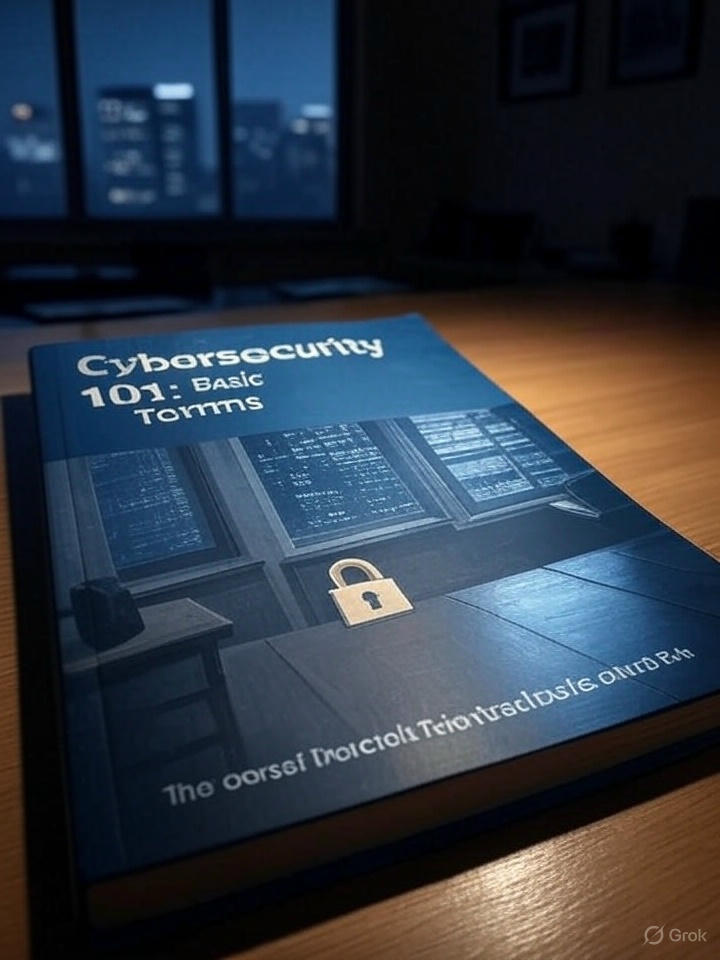Cyber threats can seem complex and overwhelming. Cybersecurity 101: Basic Terms (Glossary for Beginners)demystifies core concepts. Whether you’re a student, business owner, or IT professional, this guide provides clear definitions. You’ll learn key terms that lay the groundwork for stronger online defenses. Let’s explore ten essential cybersecurity terms that every beginner must know.
Cybersecurity 101: Basic Terms (Key Concepts)
1. Threat
A threat is any potential danger to digital assets. Threats range from malware to insider leaks. Understanding threats helps organizations prioritize defenses.
2. Vulnerability
A vulnerability is a weakness in software, hardware, or processes. Attackers exploit vulnerabilities to gain unauthorized access. Regular scanning and patching reduce these security gaps.
3. Risk
Risk measures the likelihood and impact of a threat exploiting a vulnerability. Risk assessments help teams decide which protections deliver the best return on investment.
4. Firewall
A firewall is a network security device that filters traffic. It permits or blocks data packets based on security rules. Firewalls form a first line of defense against external attacks.
5. Encryption
Encryption converts readable data into coded form. Only those with the decryption key can read it. Strong encryption protects data in transit and at rest, ensuring confidentiality.
6. Malware
Malware refers to malicious software designed to harm or exploit systems. Examples include viruses, worms, ransomware, and spyware. Antivirus tools and user education help guard against malware.
7. Phishing
Phishing uses fraudulent emails or sites to trick users into disclosing credentials. Attackers then steal data or install malware. The Cybersecurity & Infrastructure Security Agency (CISA) offers guidance on spotting phishing scams.
8. Penetration Testing
Penetration testing (or “pen testing”) simulates attacks on a system to find vulnerabilities before criminals do. Learn more about our penetration testing services for detailed security assessments.
9. Social Engineering
Social engineering exploits human psychology rather than technical flaws. Attackers persuade individuals to reveal confidential information. Regular staff training mitigates social engineering risk.
10. Zero-Day
A zero-day vulnerability is unknown to software vendors. Attackers can exploit it before a patch becomes available. Organizations rely on threat intelligence to detect and block zero-day exploits.

Cybersecurity 101: Basic Terms (Essential Definitions)
CIA Triad
The CIA triad consists of Confidentiality, Integrity, and Availability. These principles form the foundation of any security program.
-
Confidentiality ensures that information is only accessible to authorized users.
-
Integrity guarantees that data remains accurate and unaltered.
-
Availability means that systems and data stay accessible when needed.
Access Control
Access control determines who can view or use resources. Methods include passwords, biometrics, and role-based permissions. Effective access control prevents unauthorized access.
Patch Management
Patch management involves applying updates to software and systems. Timely patches close vulnerabilities that attackers might exploit. Automated tools streamline patch deployment.
Incident Response
Incident response outlines how an organization handles a security breach. It includes detection, containment, eradication, and recovery. A clear response plan minimizes damage and downtime.
Security Information and Event Management (SIEM)
SIEM platforms collect and analyze log data from various sources in real time. They help detect anomalous behavior and trigger alerts. SIEM plays a critical role in modern security operations centers.
Multi-Factor Authentication (MFA)
MFA requires users to present two or more proof factors to log in. These factors include something you know (password), something you have (token), or something you are (biometrics). MFA dramatically reduces account compromise risk.
Virtual Private Network (VPN)
A VPN creates an encrypted tunnel between a client and a server over the public internet. It protects data in transit and masks user IP addresses. Businesses use VPNs for secure remote access.
Data Loss Prevention (DLP)
DLP solutions identify and prevent unauthorized data transfers. They enforce policies that block sensitive information from leaving secure environments. DLP helps organizations comply with regulations like GDPR and HIPAA.
Conclusion
Cybersecurity 101: Basic Terms (Glossary for Beginners) equips you with essential definitions for stronger defenses. You now understand common threats, core security controls, and industry practices. Use this glossary as your foundation. Next, explore advanced topics like network architecture and cloud security. For hands-on assessments, check our penetration testing services or schedule a vulnerability scan. Remember, a solid grasp of basic terms leads to better security decisions and reduced risk.



No responses yet